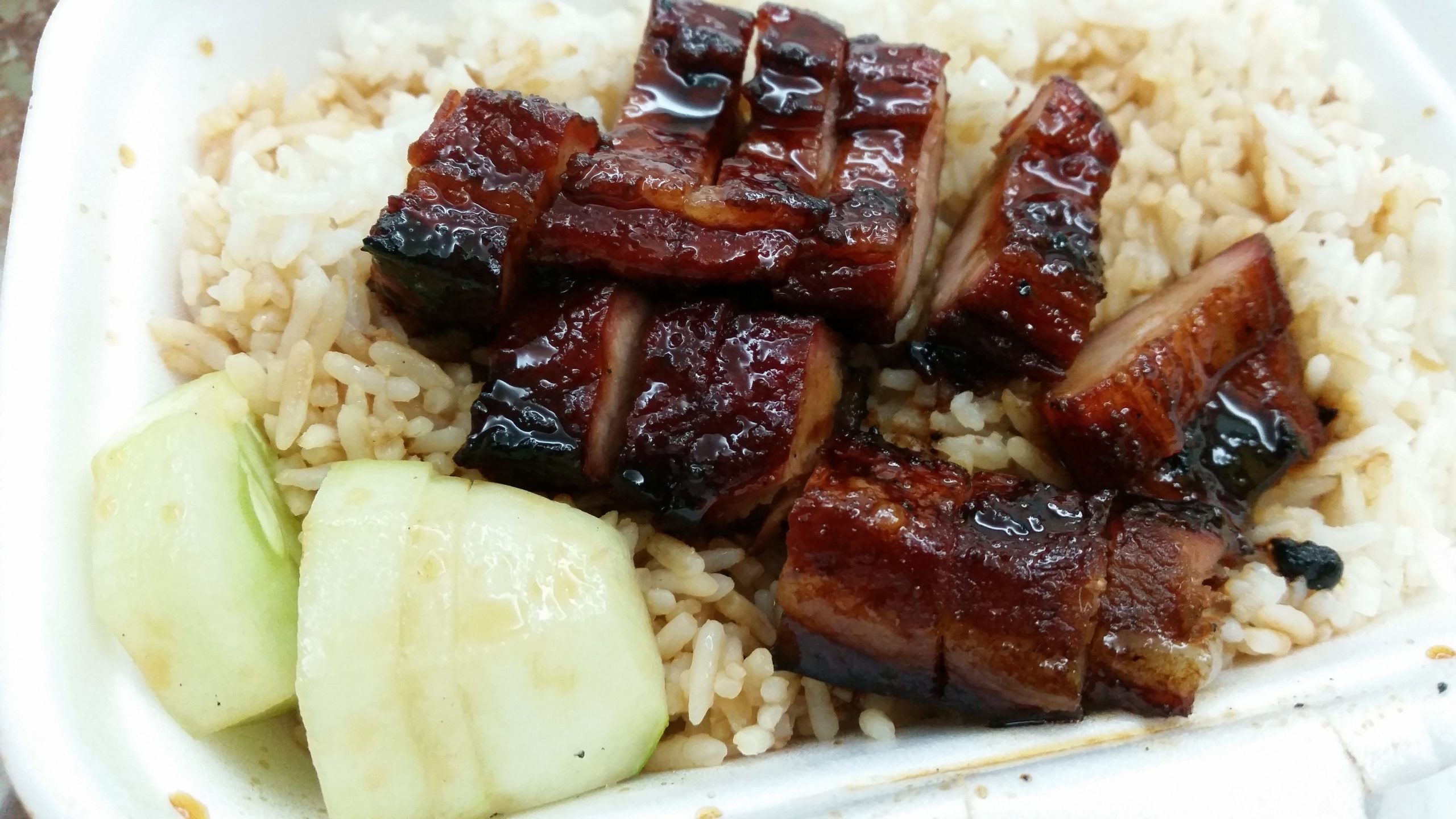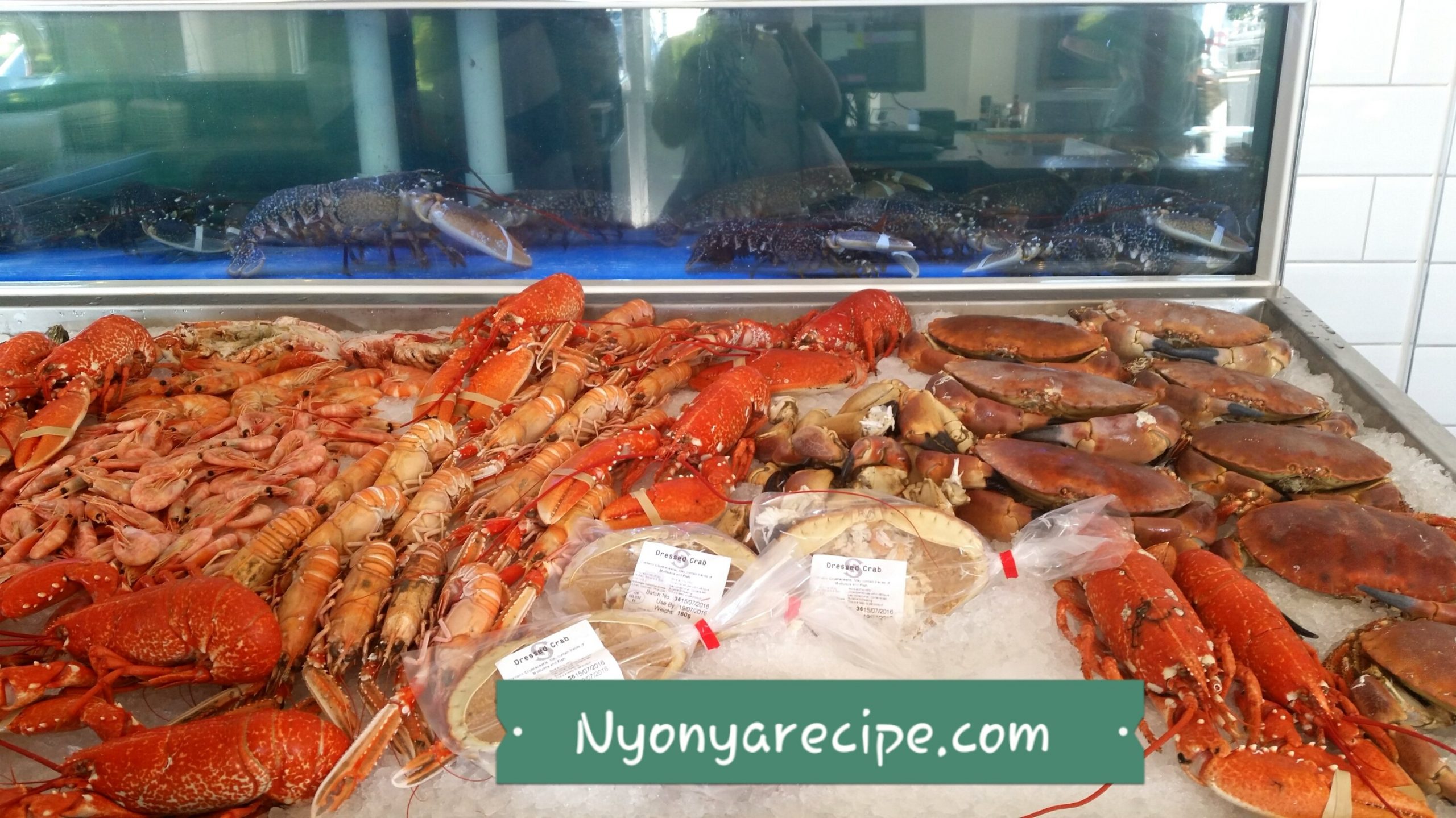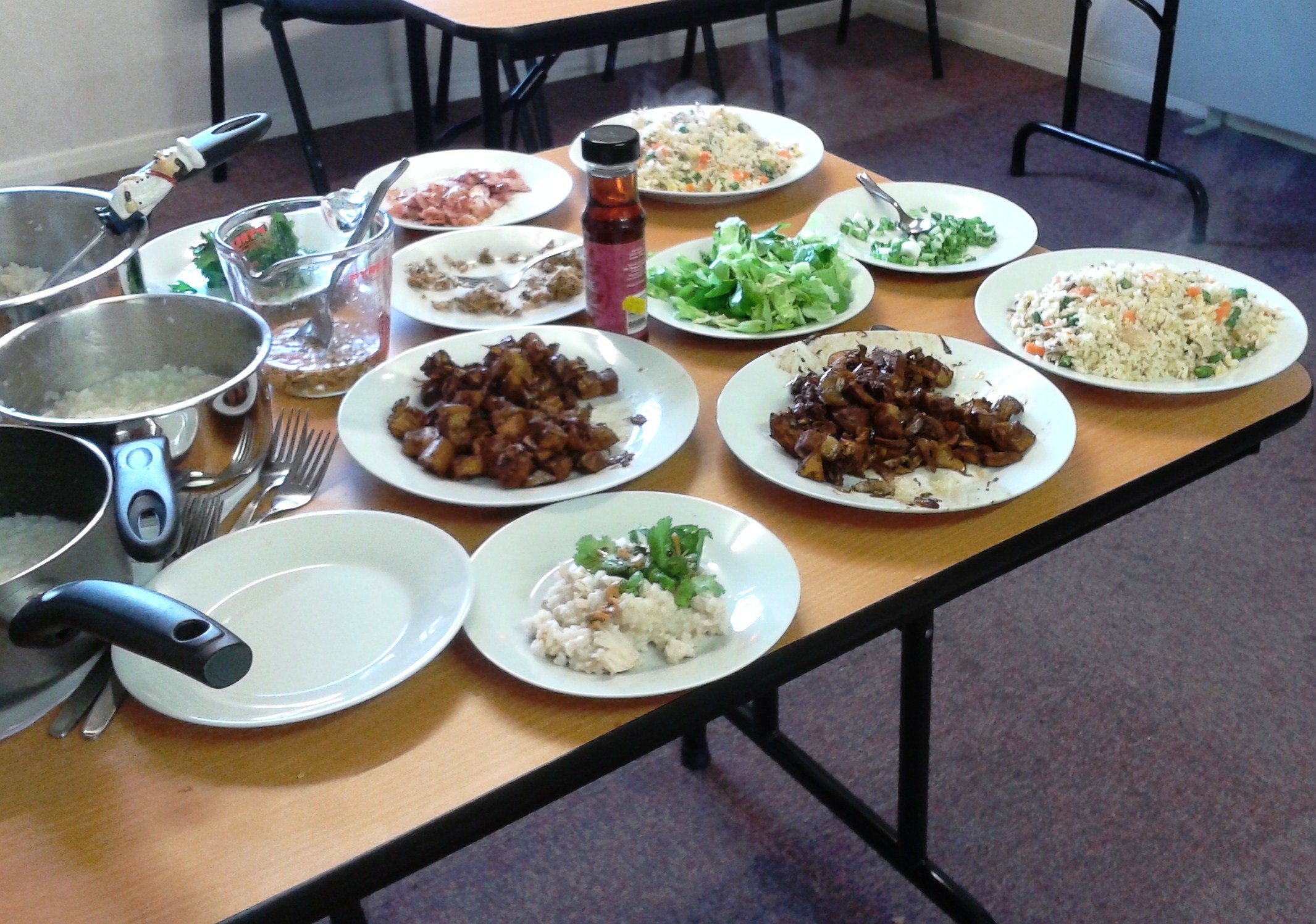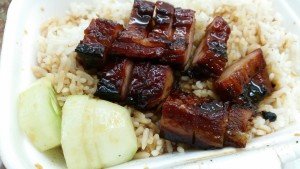
Today is Saturday and my younger sister visited me pretty early! She came with the letter from the Golf and Country Club of which I am member but now I have been an absent member since moving to the UK. I should not be paying for the subscription as it was agreed that I would not be using the facilities. So I am going to give them a ring. Unfortunately the office is closed as it is a weekend. So I shall deal with them on Monday.
So we went along doing our own things which include the morning prayers, etc. ,
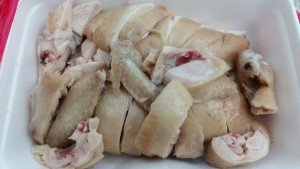
Then she rang and informed us that she is getting this take away barbecue pork from this famous restaurant in Puchong. So we agreed to have roast pork (char seo) rice. She also ordered half a poached chicken, and these come with the sauces, a soy- based sauce and chillie sauce.

Later in the evening my sister- in- law has a function to attend. So we decided on a simple takeaway – fried noodles.

We ordered a fried thick flat noodles also known as koay teow. The name for this this is ‘Tua pan koay teow’ in Hokkien. Or literal translation is ‘wide stripe rice noodles’. In the Klang Valley ( Kuala Lumpur and the surrounding areas) it is known as Cantonese style noodles, and more recently known as ‘wat tan hor’ or tanslated as ‘smooth egg fried (noodles). This is in reference to the sauce which is thickened with cornstarch and egg. This sauce makes the noodles slippery ( or silky smooth) and is a challenge to eat if you are not used to it.
While eating the noodles we remenisence about the good old days. We all love eating this noodle. The flat rice noodles are pan fried till a bit charred (Penang version ) This is then removed and a sauce is made using seafood and pork or chicken and some vegetables.
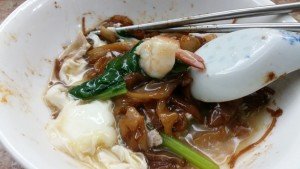
It is a balanced meal by itself. It is usually served with picked green chillies with some light soy sauce. This time, it is green birds eye chllies instead.
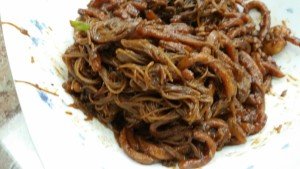
The other noodle is fried Hokkien mee, or, fried Hokkien noodles. This version is the Klang Valley version- which is thick yellow noodles fried in dark soy sauce with seafood, meat and vegetables. Rice vermicelli is usually added to the fat yellow noodles and it is a bit sweet with some sauce. The Penang version is slightly different in that thin yellow noodles are used and the method of frying is different. And that is another story. This is usually served with sambal but the Klang Valley version of sambal is …er…. a bit different.
So my sister, brother and myself enjoyed our simple dinner very much in great company.
Ahhh, the simple life!.
Btw, if you are ever in Malaysia or Singapore, these noodles are easily available from food courts, in the streets, restaurants and in hotels. Most of them are good, and the ones in high class hotels are not necessarily tastier. Some might have more expensive ingredients like larger prawns and of course cost 3 to 10 times more. Please note that the ones in hotels are most likely to be halal, so there no pork in it.
Note:
This post was drafted on Saturday. Due to some difficulties in (mobile) uploading the photos, I only managed to upload it today.
